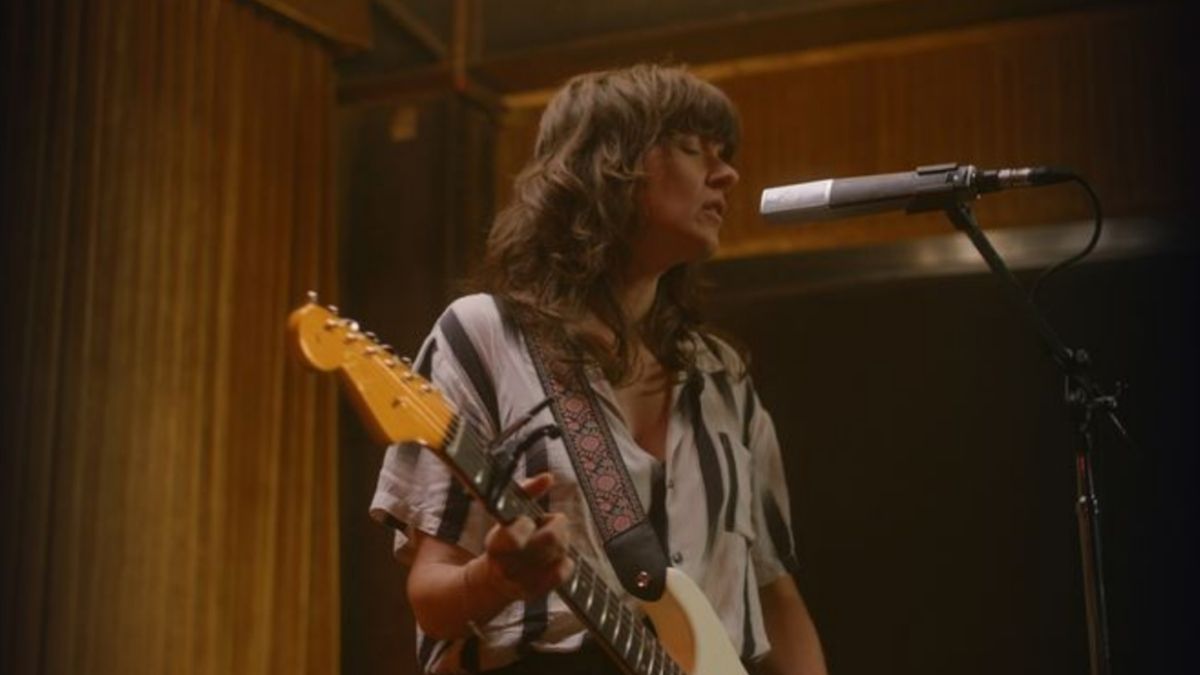“It was easier. There was something about the sound." Courtney Barnett explains why switching to a Fender Jaguar proved to be a pivotal moment in her career
The Aussie played Telecasters until necessity required her to chase a bigger, more versatile sound

Courtney Barnett is the latest artist to be spotlighted in the ongoing Fender Sessions video series, showcasing her technical but heartfelt guitar style on both a Stratocaster and a Jaguar. However, it's the latter of those two electric guitars that has had the biggest influence on her career.
The 37-year old Australian singer-songwriter released her debut album, Sometimes I Sit and Think, and Sometimes I Just Sit, in 2015, and has since released two more studio albums, as well as a collaborative LP with Kurt Vile and End of the Day, the soundtrack to Anonymous Club, the 2021 documentary about Barnett. She’s also picked up several domestic and international awards along the way, and a Grammy nomination.
Barnett's woozy indie-rock stylings, characterized by effects-warped Fenders and her intricate fingerpicking, have won her plaudits, but she downplays her skillset in the new video.
“I'll always call myself a guitar player before I call myself a singer or a songwriter or whatever, 'cause I think it's just my comfortable state,” she says. “That natural and comfortable state is playing music.”

Over the years, she’s become most synonymous with her employment of a Fender Jaguar. It was an instrument, she says, that came to her in time of need as she suddenly became greatly exposed as a guitarist and found its tonal versatility to be a lifesaver.
“We used to tour a lot as a four-piece and always had another guitarist,” Barnett explains, referring to her former touring guitarist, Dan Luscombe.. “Then there was a point where my friend Dan couldn't tour anymore, and so I had to learn both guitar parts.
“While I was in the process of learning how to do that, I was like, 'I need a different guitar.' Up until then, I was playing a Telecaster, so I went out and I bought myself my first Jaguar. It just was easier; something about the sound. I could make both worlds work.
All the latest guitar news, interviews, lessons, reviews, deals and more, direct to your inbox!
That change came in tandem with her recognition of her creative pitfalls.
“Over years of playing live, I’ve recognized that one of my safety fallbacks was to use a lot of distortion pedals,” she told Guitar Player in 2022. “When in doubt, just make a big noise. I recognized that it started to feel a little bit lazy and repetitive.
“Obviously, it’s fun to do that, and a lot of the songs called for it, I was looking for different angles: different ways to show emotions and find dynamics in the songs.”
That saw her leaning into meditative moments, peeling away from a constant craving for loudness, and she used lessons learned from visual arts school to her advantage.

“The visual stuff and music inspire each other,” she says. “Just like the power of silence in music, there’s the power of negative space in visual art. It all overlaps, and there’s no formula. It all depends on the song and the moment.”
Being left-handed, though, her search for a new guitar was greatly limited. That drew her to a reissue of Kurt Cobain's famed 1965 model. The stock model comes with DiMarzio DP103 PAF and DP100 Super Distortion pickups and a Chrome Adjusto-Matic bridge with a vintage-style floating tremolo. Here, she uses it for a frentetic take of “Turning Green”.
Elsewhere, she plays an American Vintage II 1961 Stratocaster for "Before You Gotta Go," which showcases her Neil Young in Crazy Horse-inspired fingerpicking, and she's recently taken her love for the artist one step further by covering "Lotta Love".
The dreamlike rendition is featured on the forthcoming tribute record, Heart of Gold: The Songs of Neil Young, which also includes contributions from Pearl Jam's Eddie Vedder, Sharon Van Etten and Brandi Carlile.
A freelance writer with a penchant for music that gets weird, Phil is a regular contributor to Prog, Guitar World, and Total Guitar magazines and is especially keen on shining a light on unknown artists. Outside of the journalism realm, you can find him writing angular riffs in progressive metal band, Prognosis, in which he slings an 8-string Strandberg Boden Original, churning that low string through a variety of tunings. He's also a published author and is currently penning his debut novel which chucks fantasy, mythology and humanity into a great big melting pot.


